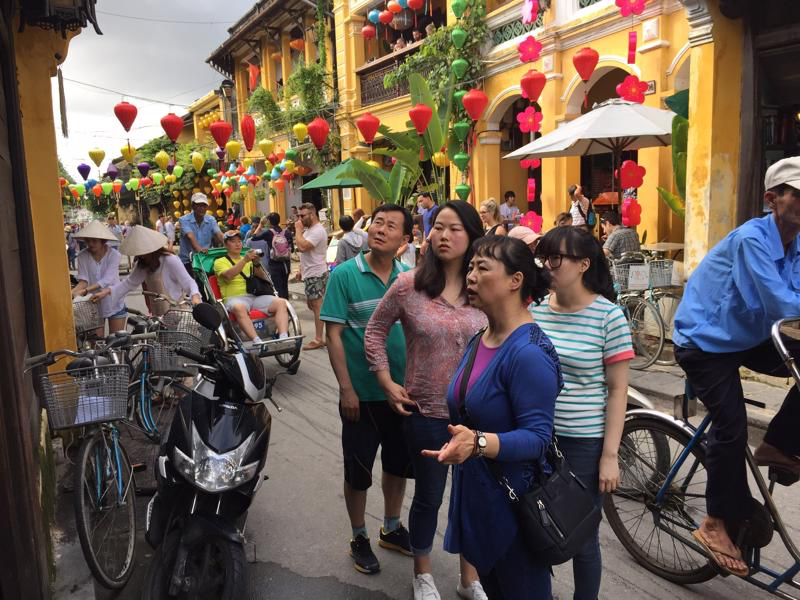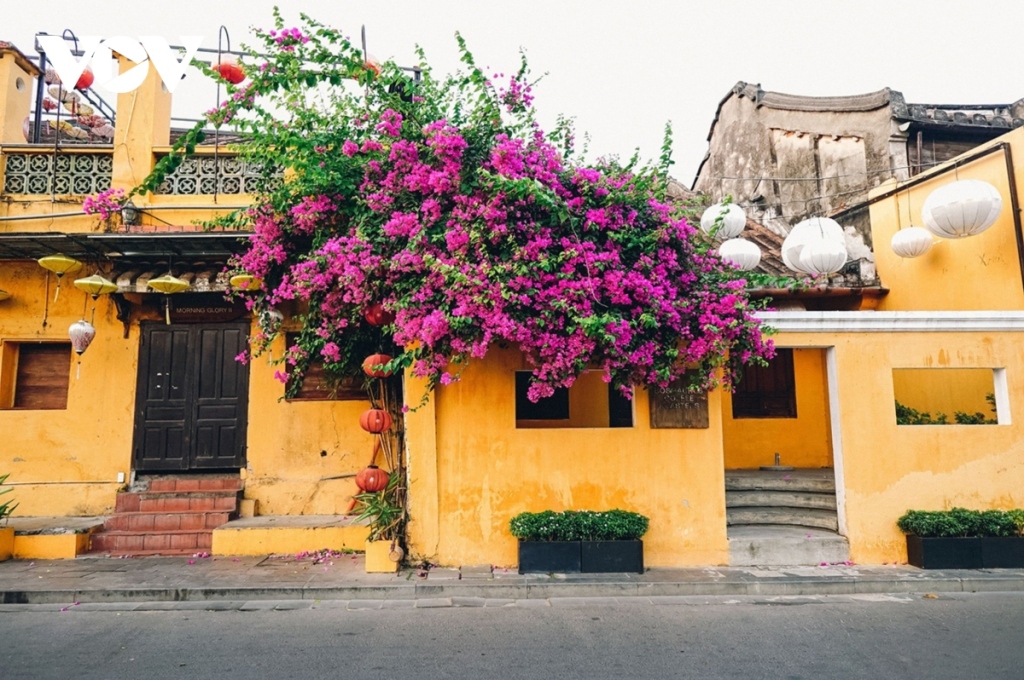Despite a slight decline in domestic visitors to Hoi An over the recent April 30 – May 1 holiday, this enchanting old town remains a captivating destination for international tourist. Additionally, the local government has launched a trial initiative in partnership with Hoi An residents to introduce an experiential accommodation model, aiming to offer more lodging choices for tourists.
Recently, British Time Out magazine published a list of the top 13 attractive destinations in the world to travel in July, in which Hoi An ancient city in Vietnam ranked 7th.
July is the month for great vacations, the month of summer, freedom, warm temperatures and many attractive and unique festivals. According to Time Out, it’s the perfect time for tourists worldwide to start cross-country journeys.

Summer Getaways
The magazine also recommends: “Particularly on the 14th and 15th days of the lunar calendar’s full moon, don’t miss the Hoi An Lantern Festival, where you can admire hundreds of lanterns glowing brightly and release your own.” These small, shimmering flower lanterns, carrying wishes, float gently along the romantic Hoai River.
Upon learning about Time Out’s recommendation, Mr. Nguyen Xuan Hai, travel director of La Palanche Voyages, commented: “I’m a bit surprised by Time Out’s suggestion, as summer and July are among the most beautiful seasons in the UK. However, it makes sense to recommend visiting Hoi An at this time when considering Vietnam, because July is the hottest and rainiest month in Hanoi and Ho Chi Minh City.”
Hoi An stands out as one of the most beloved destinations among Western tourists, particularly European travellers, seeking a memorable vacation. Its beauty is heightened by beautiful beaches like Cu Lao Cham, An Bang, Cua Dai, and Ha My, consistently making them top choices for those in search of ideal tropical escapes during the summer months.

In fact, no one can count how many titles and awards Hoi An ancient town receives each year. In particular, most of these titles and awards are voted by international organisations, mostly magazines and organisations in Europe, Australia, America… Travel experts explain that this is because Hoi An tourism is very different from other destinations. From its rich cultural heritage and vibrant local life to its historical monuments and diverse tourism products, Hoi An distinguishes itself prominently among global destinations.
Although there are only more than 1,300 ancient houses, the heritage complex and people living in the old town is a special and unique space. Along with that, the countryside and beaches are located in one block, creating three main product groups: heritage sightseeing experience in the old town, craft village tourism and countryside experience. Furthermore, it is the choices and desires for experiences from tourists that have guided the local government and people of Hoi An to continuously create new products.
Immerse yourself in the heart of the city by staying in a local home
Mr. Tong Quoc Hung, Head of Hoi An’s Culture and Information Department, recently announced that the local government has initiated a pilot program for an experiential accommodation model in collaboration with residents of Hoi An ancient town. Under this program, residents are able to host guests for meals and lodging in their homes. The selected houses participating in the pilot program are those situated in the secluded alleys, alleys within Area I, and areas in close proximity to or adjoining Area I. Additionally, houses located along the frontage of Areas I and IIA within the old town are included in the initiative.
To participate in the program, each household must be a homeowner, a native Hoi An resident living in the locality, a typical cultural family and reputable in the local community. When participating in welcoming guests to stay in the place, households will have to inform about the forms and contents, living time, and activities at home to facilitate guests’ experience and participation.

As of now, Area I, the heart of the old town, has not been designated for accommodation services but is preserved for trade and sightseeing purposes. However, if the pilot model proves successful and receives approval, Hoi An will introduce new tourism products aimed at enhancing visitors’ experiences and providing insight into the daily lives of the city’s residents for tourists to discover.
As a travel agency specialising in welcoming European tourists, Mr. Nguyen Xuan Hai, Director of La Palanche Voyages travel company, said that letting tourists stay in homestays is a great idea and very popular with Western tourists: “Tourists don’t take people’s houses for enjoyment but see them as an experiential space,” Mr. Hai said.
“Ten years ago, when the homestay concept was initially introduced to Vietnam, my guests thoroughly enjoyed their experience at Lac village homestays in Mai Chau. With the current travel trend leaning towards small group trips with friends or family, there’s a heightened demand for experiential stays. Homestays emerge as an ideal lodging model, particularly within the heart of the old town, making the experience even more enchanting. Presently, Vinh Hung hotel stands as the sole accommodation option within the old town center, and it remains the top choice among Western guests.”
“If Hoi An successfully pilots the model for guests to stay at home in the old town, I will definitely include this product in my year-end tour,” Mr. Hai affirmed. However, Mr. Hai also believes that the houses in the core area of Hoi An are ancient houses that are hundreds of years old, so the government also needs to set specific conditions to preserve the heritage.
According to statistics, Hoi An ancient town has more than 1,000 houses and ancient relics. Approximately 10% of these are under state management, while 20% are owned collectively, comprising clan churches, guild halls, and family memorial houses. The majority, constituting 70%, is privately owned, with 30% belonging to Hoi An natives and 40% transferred to individuals from outside the province.

